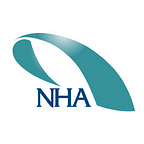Snohomish County PUD Facility Manages Water Temperatures to Support Migrating Fish Populations
Managing water temperature and its impact on native and migrating fish is a common challenge facing owners of hydropower facilities. During the summer months, or times of drought, the river water can be too hot for aquatic life; during winter months, water can be too cold. Other times, operators get lucky and the temperature is ideal.
When it came time to relicense its Henry M. Jackson Hydroelectric Project, Washington-based Snohomish County Public Utility District (PUD) was required to warm the water just below the Culmback Dam to better reflect the natural temperatures found seasonally in the Sultan River. This would protect migratory fish, including Chinook Salmon and Steelhead Trout, as well as macroinvertebrates and other aquatic life.
As part of the relicensing requirements, Snohomish County PUD also was previously tasked with installing a fish passage system at the Diversion Dam to reintroduce migrating fish into Reach 3 at the base of the dam. When the fish passage project was complete in 2016, the utility needed to address the resulting challenge: Water temperatures in Reach 3 were too cold for the newly introduced migrating fish, which could negatively affect their growth, condition, and reproductive success. In response, the utility got to work evaluating what it would take to manage water temperatures and protect native and migrating fish.
The Solution
Though the facility was originally licensed by FERC in 1961, it became a hydropower facility in 1984. At that time, local and environmental agencies requested the utility address water temperatures in Reaches 1 and 2, so a selective withdrawal structure was constructed to manage temperatures.
“When it went from a water supply project to a hydropower project in the 1980s, we built a selective withdrawal structure that allowed us to provide temperatures in the range of what is natural for the lower two reaches of the dam that we deliver water to,” says Snohomish County PUD’s Manager of Natural Resources Keith Binkley. “That leaves the upper release subject to temperatures at the base of the dam. The withdrawal structure gave us interesting options to deliver temperature control to Reach 3.”
A 715-foot-long tunnel was constructed between the existing power tunnel from the withdrawal structure and the base of the Culmback Dam. The tunnel would divert some of the water traveling through the tunnel to Reach 3, a 6.4-mile-long stretch of river between the Culmback Dam and the Diversion Dam.
In addition, the project took advantage of the existing water withdrawal system. The intake for the system was located near Culmback Dam in the reservoir. If necessary, it allows a wide band of water temperatures to blend with the cold water at the bottom of the reservoir when the reservoir is stratified in temperature (typically from April through October) and pass through Reach 3.
While these efforts provide warmer water when necessary, they also presented the ability to send cold water from the bottom of the reservoir to Reach 3 during the summer months, providing optimal temperature all year.
The water temperature conditioning structure was complete in November 2018, ensuring year-round adherence with state water quality criteria. The water conditioning is expected to stimulate primary productivity, increase macroinvertebrate production, improve fish growth, expand fish distribution, and add resiliency to the fish population in the Sultan River.
“Hydropower is not just a carbon-free renewable resource; it also presents a lot of opportunities to help with environmental sustainability going forward, as far as resources go,” says Snohomish County PUD’s Senior Environmental Coordinator Dawn Presler. “Hydropower can support the bigger picture of climate change — and support our natural resources.”
Snohomish County PUD’s efforts were honored by the National Hydropower Association, which awarded it with a 2019 Outstanding Stewards of America’s Waters award in the category of Operational Excellence.
